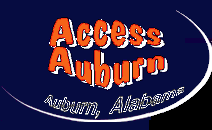Most Cereal Has Too Much Sugar
We've all heard that eating breakfast is a great way to start your day and can reduce the risk of obesity and diabetes. But, a study by the Environmental Working Group found that many popular cereals are loaded with sugar.Eating a good breakfast is important for children and their school performance. Those children that do eat breakfast are probably eating cereal that has too much sugar. At least three popular children’s cereals are packed with more sugar in a one-cup serving than a Hostess Twinkie, and an additional 44 are loaded with more sugar in a cup than three Chips Ahoy cookies, according to EWG.
Of the 84 cereals analyzed, Kellogg’s Honey Smacks, Post Golden Crisp and General Mills Wheaties Fuel rank as the worst offenders based on the Twinkie measure. Other brands including Honey Nut Cheerios, Apple Jacks and Cap’n Crunch are among the 44 cereals that have more sugar in a cup than three Chips Ahoy cookies.
The study also found that in nearly three-dozen brands, sugar makes up more than a third of the cereal by weight. Those include the original and “marshmallow” versions of Kellogg’s Froot Loops, as well as the original and “all berries” version of Quaker Oats Cap’n Crunch.
Too much sugar has been linked to obesity issues. Obesity rates have more than doubled for children ages 2 to 11 and more than tripled for teens ages 12 to 19 in the past three decades.
Research also suggests that sugar is habit-forming and that children who eat a high-sugar breakfast have more problems at school because they are more easily frustrated and have a hard time working independently.
There are several big-brand cereals that contain lower amounts of sugar like Kellogg’s Mini-Wheats (frosted or unfrosted), General Mills’ original Cheerios and Kix, Post Shredded Wheat (all varieties), and Quaker Oats Cinnamon Oatmeal Squares.
Here are a few ways to reduce your child's sugar intake:
Read back package labels: Don’t be fooled by the front of the box nutrition claims. Look at the nutrition panel on the back, and make your own decision. Grams of sugar per serving doesn’t connect with most people, so translate this into teaspoons of sugar by dividing the sugar grams on the label by four. A cereal with 20 grams of sugar contains 5 teaspoons of sugar. And skip the “good source of whole grains” on the front; instead, look for three grams of fiber per serving, found on the back.
Cut the sugar in half by mixing with low-sugar cereals: Many brands of cereals contain a low-sugar “basic” with higher-sugar product. Mix original Cheerios in equal parts with Honey-Nut Cheerios, and cut the sugar by 50 percent. This works for any high/low combination of cereals.
Add some fresh, frozen or dried fruit to low-sugar cereals: Boost the nutrients and provide nature’s sweetness by adding fruit to a low-sugar cereal.
Use the high sugar cereals as a dessert: Portion out a single serving (about 1 cup) in a small bag for your child to enjoy as a treat or dessert, instead of a cookie or other treat.
Choose low fat or non-fat milk, or soy milk. These are calcium- and vitamin D-rich options — important for kids of all ages.


